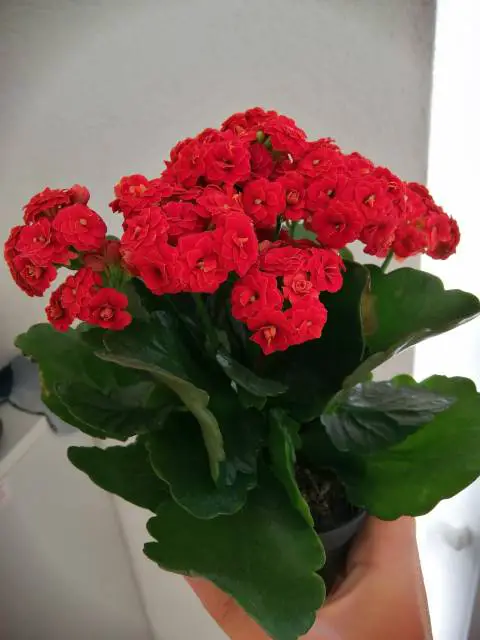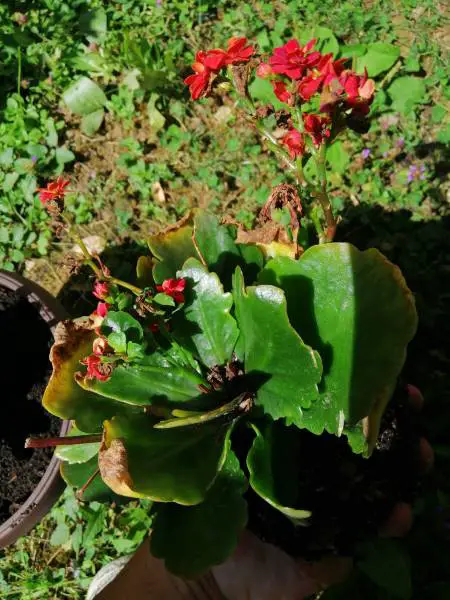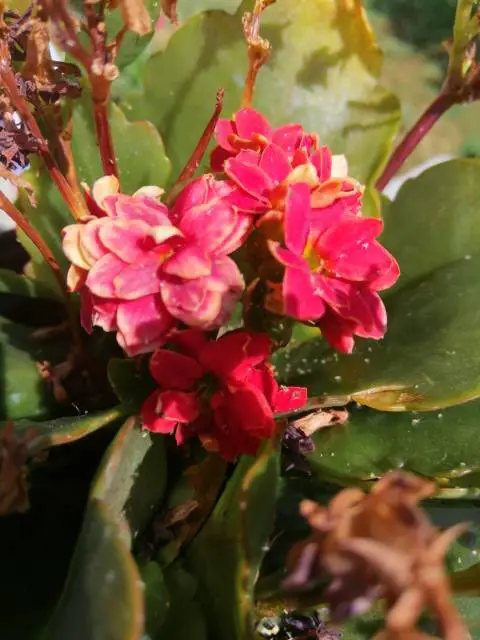Kalanchoe blossfeldiana Poelln is an herbaceous succulent that is widely cultivated as a houseplant. This is the most famous plant in the genus Kalanchoe.
It is a perennial plant of Crassulaceae family and commonly known by many English names such as Flaming Katy, Florist Kalanchoe, Christmas Kalanchoe, and Madagascar Widow’s-Thrill. It is super easy to grow and makes a wonderful houseplant. You might have seen this amazing flowering plant in the markets during the holidays and winter months.
Kalanchoe blossfeldiana is drought-tolerant and can survive in desert conditions. This plant is mainly grown for its flowers, not for the foliage. They are often used in home, office, and wedding decoration, making them the best flowering gift plants. If you are fond of growing plants bring some Florist Kalanchoes at your home you will absolutely, fall in love with their mesmerizing beauty. These plants will surely be a great addition to your home.
Origin and Distribution
It is native to Madagascar, where the plant grows in wild. It can be found commonly growing in the humus soil (humus is an organic matter that forms in the soil when plant and animal matter undergoes decay) at cool plateaus of Tsarantanana Mountains.
How does Kalanchoe blossfeldiana look like?
Florist kalanchoe is widely admired for its beautiful appearance and colorful flowers. It is a glabrous, bushy succulent that can reach an ultimate height of 1.5 feet (45 cm) and width of 1.6 feet (48 cm) in 2 to 5 years. It is a slow-growing plant and has a round growth habit. Leaves are thick, glossy, dark green, which stay green throughout the year. The ovate shaped leaves have scalloped edges, and the arrangement of veins is absent or very hard to observe. It has a cheery cluster of small flowers of different colors varying from dark red, pink, orange, yellow, golden, and white.
The flowers usually bloom in late autumn to early winter. Flowers are tubular-shaped consisting of four petals and born on peduncles which are raised above the leaves.
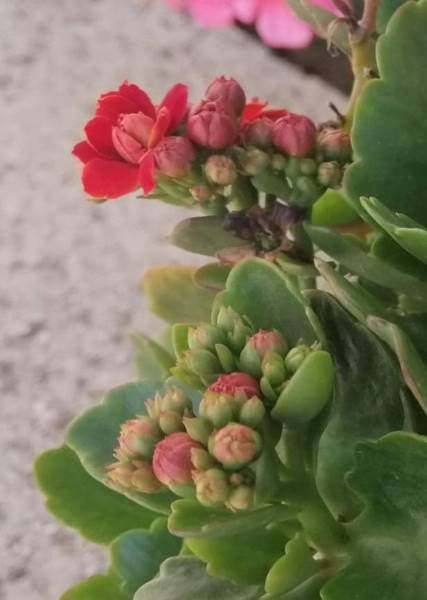
Florist kalanchoe is mostly chosen for its amazing long-lasting flowers. The flowers in a variety of colors give a beautiful colorful floral display at your home.
How to care for Kalanchoe blossfeldiana?
If you love Kalanchoes like me, you would surely like to have a few Florist Kalanchoes in your home gardens. No matter whichever Kalanchoe species you chose to grow all of them can generally grow easily with very little care.
They require minimal to no care at all and can grow pretty well indoors. With just a little effort you can enjoy these amazing plants in your indoor or outdoor plant collection.
How you can have your healthy growing plants?
I will share some useful tips here. Keep reading to learn how to grow and care for your Florist kalanchoes.
Location and Sunlight requirements
All succulents of genus Kalanchoe love to grow in bright sunlight.
Keep your Florist Kalanchoes indoors near a south-facing window during winter. Make sure not to place the plants near a north-facing window in the winter season. In the summer months placing the plants near an east or west window is better.
If the plants start growing unusually tall with widely spaced leaves, it is an indication that the plants are searching for light. In such a situation move the plants under bright sunlight to bring the growth back to normal. In this way, you will have more and long-lasting blooming in the upcoming season.
Temperature and humidity requirements
Temperature is one of the most critical requirements of growing Florist kalanchoes because these plants are very sensitive to temperature extremes.
The temperature for growing Florist kalanchoes ranges between 50◦ F (10 °C) to 80◦ F (26 °C). The ideal temperature range is 65 (18 °C) to 75 ° F (24 °C). If you are keeping Florist Kalanchoe outdoors during summer months, must bring them indoors if the night temperature drops below this range.
USDA hardiness zones for growing Florist Kalanchoes
It grows well in USDA hardiness zones 10 to 12 where the temperature is favorable for its growth.
- USDA Zone 10a: (30-35 °F) -1.1 to 1.7 °C
- USDA Zone 10b: (35-40 °F) 1.7 to 4.4 °C
- USDA Zone 11a: (40-45 °F) 4.4 to 7.2 °C
- USDA Zone 11b: (45-50 °F) 7.2 to 10 °C
- USDA Zone 12a: (50-55 °F) 10 to 12.8 °C
- USDA Zone 12b: (55-60 °F) 12.8 to 15.6 °C
In zones 10 and 11, Florist Kalanchoes can be planted directly in the landscape with minimal winter protection and will grow fine as perennial plants.
Florist Kalanchoe is a tropical plant. It is very sensitive to cold and temperatures below freezing can easily kill them. These plants must be protected from frost because even a few hours of exposure to a temperature below 40° F (5° C) was found to kill unprotected Florist Kalanchoes.
Do not even keep your plant in direct contact or near the glass windows when the temperature drops below 50 ◦ F.
Be warned, do not expose your plants to very high temperature as well because it can cause sunburn or sunscald.
Generally, they do not have specific humidity requirements. Room humidity is just fine for them. They do not like to be misted regularly.
Watering requirements
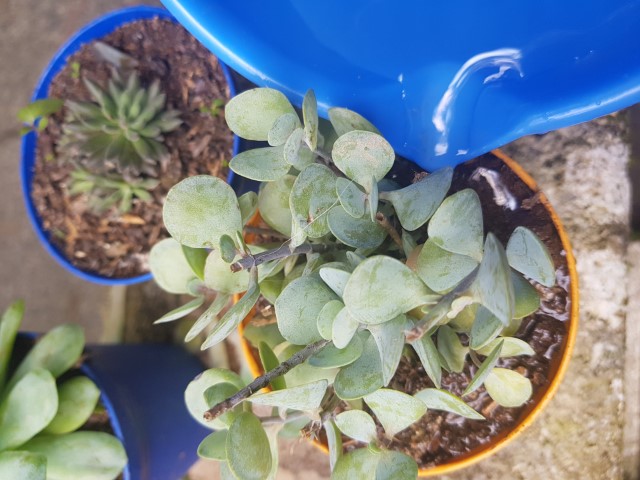
Florist Kalanchoes are drought tolerant and do not like to be watered very often. The plant stores water in its thick, waxy leaves, which helps it to survive prolonged periods of drought. When the plant faces water shortage it starts utilizing the water stored in its leaves and stems. They can easily go without water for 2 weeks.
Water the plants moderately and always let the soil dry out completely before watering again. Do not water your plants when the top 1 to 2 inches of soil are still moist. In this case, just wait until the soil becomes dry.
Water properly and let the excess water to drain through the bottom. Keep a tray underneath the pots to collect the excess water and remove it once the water drains out completely. In this way, you will prevent your floors or furniture to get wet from the extra water.
Water the soil only and do not apply water on the leaves, if you accidentally spill some water on the leaves just soak it with a dry cloth.
One of the major issues of Florist Kalanchoes is overwatering. Be very careful while watering as these plants cannot stand overwatering at all. If you provide excess water to your plant it will easily cause rotting and disintegration of roots.
Though these plants are drought-tolerant, beware prolonged periods of drought can also damage your plants. Although they can tolerate a period of neglect, if you do not water your Florist Kalanchoes for weeks or months, after a certain time they will develop symptoms of wilting and drying. In such a situation just resume regular watering and your plants will jump back to normal growth.
Soil or potting mix
The selection of a good potting mix is necessary to ensure better growth of the plants. Florist Kalanchoe grows easily in a well-drained standard succulent potting mix or cactus mix.
You can also prepare a potting medium at home. Just add some sand, perlite, and compost to the normal potting soil. Compost provides essential nutrients for plant growth. Perlite is used as a soil amendment to increase soil permeability and prevents compaction.
Fertilization
Florist Kalanchoe does not like to be fertilized very often. These are desert succulents and can thrive well even without nutrition for a long time.
If you want your plants to grow healthy and produce more blooms you can apply a balanced dose of fertilizer.
During the actively growing or blooming season, feed the plants with an all-purpose balanced liquid fertilizer every 2 weeks. Fertilization during the blooming season will promote more flowering.
Always choose a fertilizer that is high in phosphorus and avoid an overdose.
How to propagate Kalanchoe blossfeldiana?
Florist Kalanchoes are super easy to propagate and grow. If you do not want to buy new plants, you can propagate your existing Florist Kalanchoes easily.
This way you will have tiny baby Florist Kalanchoes in no time and this will also save the cost of buying new plants.
You can propagate new Florist Kalanchoes by using stem and leaf sections. For the best results of propagation only select those plants which have firm, healthy, and damage-free leaves. The selection of thin, weak, and dry leaves will cause the failure of the whole process because they tend to dry out quickly.
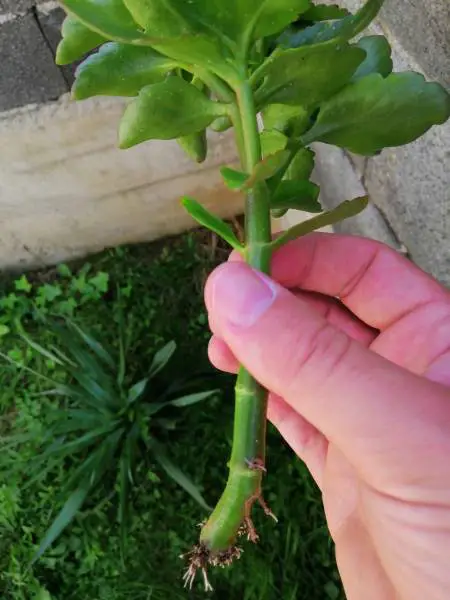
Simply cut the plant part you want to propagate using clean garden shears or scissors. You can also cut the whole stem and use it for propagation because it will start rooting very soon.
Place the plant cuttings at a dry place and let them develop callous for 2 to 3 days. Placing the cuttings in a growth hormone powder will ensure better rooting (It is optional).
Fill the potting medium (a standard succulent potting mix) in clay pots or any other type of container.
Read More about Kalanchoe Blossfeldiana propagation here:
http://kalanchoe-succulent.com/kalanchoe-blossfeldiana-propagation/
Make a hole at the center of the growth medium and place the cuttings in a well-drained, slightly moist potting mix. Start watering the cuttings immediately. Do not overwater just mist your cuttings several times a day.
To retain the moisture, cover the pots with polyethylene sheets.
Do not expose the pots to direct sunlight and drought conditions for the first few weeks. After 2 weeks, try to pull the plant gently to check for root development. If the plant shows resistance on pulling, it indicates root growth. It is the time to shift the plants to new containers.
Potting and repotting
Repotting your Florist Kalanchoes every year can ensure better growth every year. But they do not require to be repotted frequently. If you want to re-pot the plants it will be entirely your choice.
How to get your Kalanchoes repotted?
Dig the soil around the root zone and gently pull the plant. Be careful and do not rush as you may damage the roots with carelessness.
Fill the pots with a regular succulent potting mix and transfer the plants to new pots. Keep a vigilant eye on the plants until they establish in the new soil.
Pruning and maintenance
Florist Kalanchoes do not require a lot of maintenance. Just prune your plants to keep them look tidy and promote new growth.
Cut the spent blooms, and dead or damaged leaves to make room for new growth. Removal of spent blooms and buds is also known as deadheading. Take sharp gardening shears and remove the undesirable parts. Do it carefully to avoid damage to other plant parts.
Trim your plants if they are overgrowing the containers or growing too tall. It will not only give an organized look to your plants but also encourage new and healthy growth in the upcoming seasons.
The indoor or outdoor plants may accumulate dust on the plant parts. Just wipe the leaves with a damp cloth to make them look neat.
Is Kalanchoe blossfeldiana poisonous?
Though it is safe for humans like all other succulents Florist Kalanchoe is toxic to cats, dogs, and livestock. These plants contain cardiac glycosides which are highly poisonous.
If you are keeping pet cats or dogs at home, keep the Florist Kalanchoes away from their reach. Your pets can develop several symptoms of toxicity such as a change in the heartbeat, stomach upset, excessive salivation, diarrhea, and vomiting.
In most of cases, they are not fatal. But the intensity of toxicity depends upon how much plant part the pet has consumed.
If your pet accidentally ingests any plant part just take your animal immediately to a Vet. Do not wait for the symptoms to appear just seek advice from the Vet as soon as possible.
Insect Pests and Diseases
Kalanchoe blossfeldiana is generally resistant to diseases and insect pests. It is attacked by insect pests such as vine weevil, mites, scales, and mealybugs.
These tiny crawlers can be very troublesome if left unchecked. If you do not control the infestation at an early stage it can cause irreversible damage to the plants.
Keep an eye on the plants and identify the problem immediately. As soon as you spot the very first insect start crawling on the plants start treatment immediately.
In most of the cases, rubbing the plant parts with alcohol is enough to throw away the insects. Neem oil spray can also help you to do the job.
You can also use a recommended non-toxic insecticide or chemical to get rid of these pests.
Florist kalanchoes also become susceptible to fungal root rot when they are exposed to overwatering.
How to make your Florist Kalanchoe rebloom?
When you effectively learn how to grow Florist Kalanchoe, you might want to know how to make your plants bloom for years.
This plant loves to grow in cool, short days. Therefore, it is treated as an annual plant and discarded once it has finished blooming. Throwing your plants away can be a painful experience for many gardeners.
The good news is you can make this beautiful succulent rebloom, but it requires some effort and skills. If you master the skills of re-blooming you can have your plants blooming for several years.
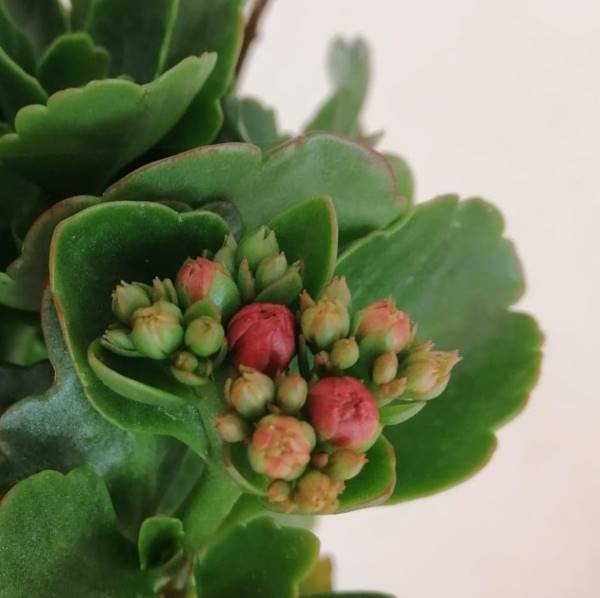
Keep reading to know how you can make your Kalanchoes blooming for years.
Florist Kalanchoes generally bloom in the early spring season. Plants need a period of low light and short-day exposure to initiate blooming.
If you want to make your Kalanchoes rebloom, you need to provide them low watering and natural winter light conditions at home for 6 weeks.
Cut short the water supply, water only half as you do for a normal plant. Keep your plants in complete darkness for 6 weeks for 14 hours every day.
It might be a bit challenging to provide 14 hours of complete darkness at home. But you can keep your plants in a closed cabinet or place a box over it to ensure complete darkness. If you continue this practice for 6 weeks, you will make your plants bloom cheerfully in the next blooming season.
Be warned don’t expose your plants to low temperature during the blooming season as it can prevent bud development.
Once the plants start blooming bring your plants to normal conditions and resume normal watering and light exposure.
Although this practice requires a little effort and time, you will realize the cheerful sight of blooming flowers is worth it.
From where to buy Florist Kalanchoes?
You can buy new Florist kalanchoes from the local markets or nurseries. During the blooming season, you will find many plants stocked in the market.
In the US you can buy Florist kalanchoes from the garden center of both Lowe’s and Home Depot. Small garden centers or nurseries are a great place to buy these beautiful succulents.
Florist kalanchoes are also available online and you can buy them from Etsy and Amazon shopping websites.
Bottom line
Florist kalanchoes are wonderful flowering succulents that give a beautiful floral display at your home.
Care for these amazing plants is very easy. You must be careful about the light, temperature, and watering needs.
Luckily, you do not need to throw them away once they are done blooming as you can make them bloom again for years with just a little effort.
Generally, these plants will grow fine even without care at all. It’s a great choice for those people who have a busy work routine and can’t find enough time to care for their plants.
Now you know all the prerequisites and requirements for growing Florist kalanchoes. Just bring a few Florist kalanchoes at home and cherish their amazing beauty.

